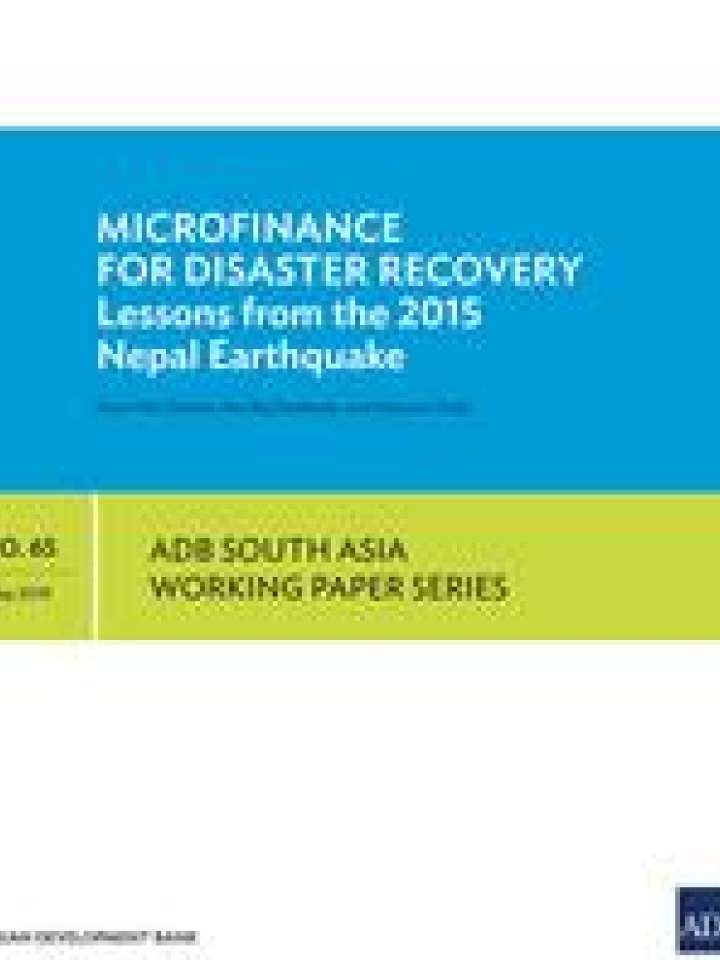Microfinance for disaster recovery: Lessons from the 2015 Nepal earthquake
Disasters often affect the poor more than other segments of society. Once a disaster strikes, the poor have to allocate their scarce resources to cope with the disaster’s effects. With the limited financial resources they rely on after a disaster, the poor often sink deeper into poverty. Microfinance institutions (MFIs) can assist the poor’s disaster recovery by providing emergency microcredit and other relief services. MFIs are well positioned to assist the poor’s recovery because of their close association with rural communities, as well as their commitment and mandate to serve the poor.
This report assesses the impact of the livelihood restoration microcredit provided to the affected households after the earthquake in Nepal in April 2015. The assessment found that access to finance after a disaster has a critical positive impact on the affected households’ recovery. The report also provides recommendations on how MFIs can play a role in supporting rural communities’ disaster risk mitigation and preparedness efforts.
